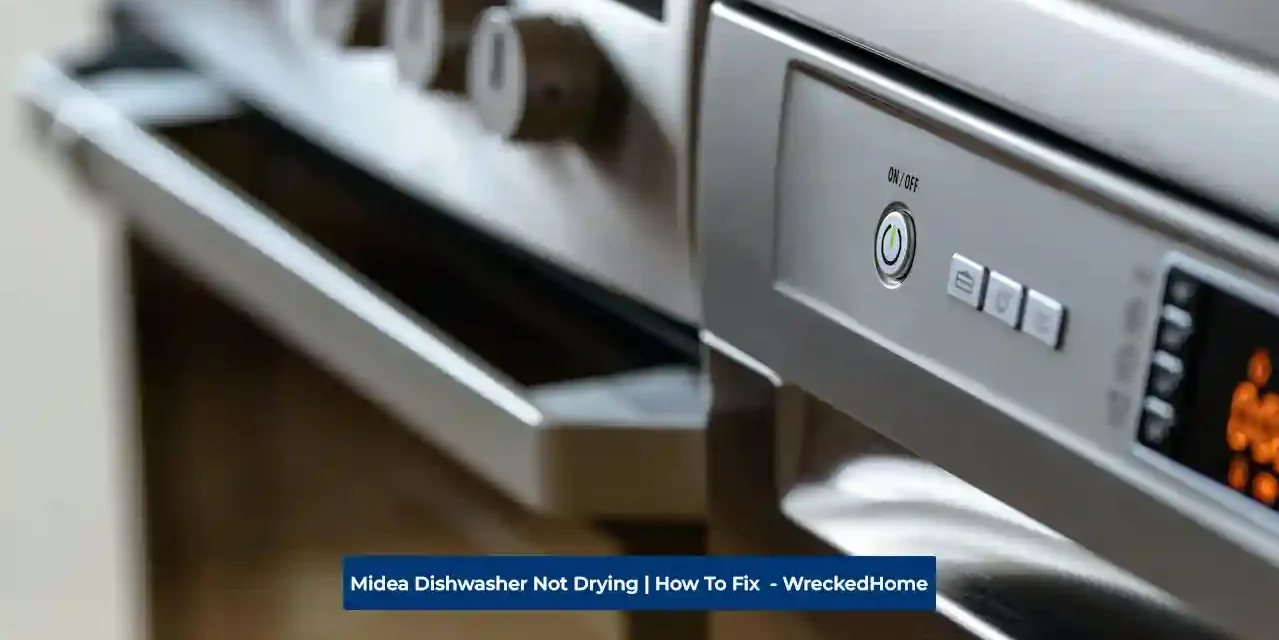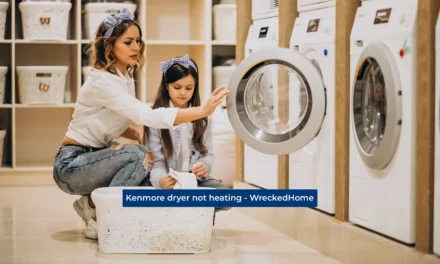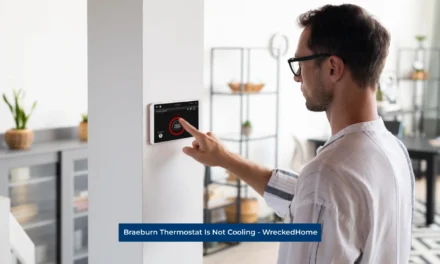For those looking for an efficient and reliable dishwasher: Midea dishwashers are a great choice. With their innovative designs and advanced features, these dishwashers clean dishes with ease. However, a common problem that Midea dishwasher owners often encounter is the persistent issue of dishes not drying after a wash cycle. It is one of the most prevalent issues faced by Midea dishwasher users as they expect the dishwasher to not only clean but also thoroughly dry those dishes
Importance of Addressing this Issue
It is indeed important to address the problem of your Midea dishwasher not drying the dishes. The reason this issue should be addressed is because damp dishes can lead to bacterial growth which makes them unhygienic.
Secondly, it defeats the purpose of owning a time-saving appliance. Users want to have something that not only cleans but also drys the dishes quickly. The wet dishes might lead to more significant and costly repairs.
If you are using a Midea dishwasher then you need to know the reason behind this issue. In this article, we will explore the common reasons and provide practical solutions for resolving it. If you have other issues with you dishwasher, check out our article on diagnosing a bad control board. Let’s learn and ensure that your Midea dishwasher operates at its optimal best.
Common Reasons for Midea Dishwasher Not Drying
If you are using a Midea dishwasher in your kitchen and want to make your experience hassle free then you should know the reasons behind your dishwasher not drying. Without knowing the root cause it’s difficult to treat the issue. So, let’s diagnose why midea dishwasher is not drying.
- Faulty Heating Element: The heating element is one of the primary reasons why your Midea dishwasher may not be drying effectively. If there is good amount of heat that raises temperature inside the dishwasher during the drying cycle the dishes can dry quickly. If it’s damaged then its unable to generate enough heat to evaporate the remaining moisture on your dishes, leaving them wet.
- Timer or Control Board Issues: The timer or control board in your dishwasher plays an important role in regulating the drying cycle. If there is any malfunctioning in the timer or a faulty control board, then the result will be improper drying.
- Poorly Loaded Dishwasher: The way you keep or arrange your dishwasher can significantly impact its drying performance. This happens when your load is overcrowded. This blocks the airflow and hinders the circulation of hot air during the drying cycle. In this way moisture doesn’t escape and damp dishes are the result.
- Water Not Draining Properly: Another reason for wet dishes is an inadequate draining process. Improper draining can lead to moisture buildup at the bottom of the appliance. As a result, the excess moisture can then condense on your dish washer, leaving dishes wet.
- Incorrect Detergent Usage: another factor that can ruin the dishwasher drying ability is use of the wrong type of detergent. Also using too much or too little detergent can badly impact the dishwasher’s ability to rinse dishes properly. If there’s detergent residue left on your dishes then it can hurt the drying ability. Therefore, always follow the manufacturer’s recommendations or guidelines for detergent usage to enhance drying performance.
- Hard Water Deposits: Hard water contains minerals that can leave deposits on your dishes, during wash cycles. This makes them appear cloudy and lower the dry ability. Over time, these deposits can accumulate on the heating element of dishwasher and lead to lower its health. It is recommended to use a water softener if you live in an area with hard water to wash dishes.
- Dish Material: The material of your dishes is also responsible for how well they dry. Plastic dishes tend to retain moisture and take more time to dry as compared to glass or ceramic dishes. This can be a factor in time taking dry process.
By understanding of these common reasons for a Midea dishwasher not drying, now you can take key steps. In the subsequent sections of this article, we will explore troubleshooting steps and solutions that speed up the drying time to save you time and money.
Step-by-Step Troubleshooting Guide
After getting knowledge about the key problem now you need to know how to treat this issue. Similarly, a Midea dishwasher that is not properly drying, there are some of the key solutions that help users to solve problem. Most common and recommendations are as follows:
A. Preliminary Checks
- Ensure the Dishwasher is Plugged In and Getting Power: Sometimes, a loose plug or tripped breaker can easily be the cause of the dishwasher not drying. To avoid this type of issue Check the power cord, the outlet it’s plugged into, and the circuit breaker. Start your troubleshooting by ensuring your Midea dishwasher is connected to a power source and receiving electricity.
- Confirm That the Dishwasher Door is Properly Closed: A common oversight is improper closing of the dishwasher door that won’t start or complete its cycles, including drying. Therefore ensure there are no obstructions preventing it from closing tightly and drying cycle start properly.
B. Checking the Heating Element
Check out everything is okay in the heating element by inspecting. This is typically located at the bottom of the appliance. To access it, you may need to remove the lower rack at the bottom. it is underneath that. Now you can look for any signs of damage or discoloration. If there is any sign of a burnt or damaged heating element then replace it with a priority basis. To replace it: disconnect the wires, noting their positions, and replace it with a new heating element of the same model. Then reassemble the dishwasher, ensuring all connections are secure.
Visit our store for 10% off our Save Home Energy products here.
C. Diagnose Timer or Control Board Issues
If you suspect timer or control board problems, you have two options: replace or repair it. You need to inspect it by checking for error codes on the dishwasher’s display panel, if available. These codes can provide valuable information also there can be visible damage or loose connections.
Replacing these components typically consists of the use of a multi-meter to test the continuity of the timer and control board components. If there is a fault, disconnect the dishwasher from the power, accessing the control panel or board, and swapping out the faulty part with a new one from the manufacturer. If you do not have proper knowledge then consult a professional for best results.
D. Loading the Dishwasher Correctly
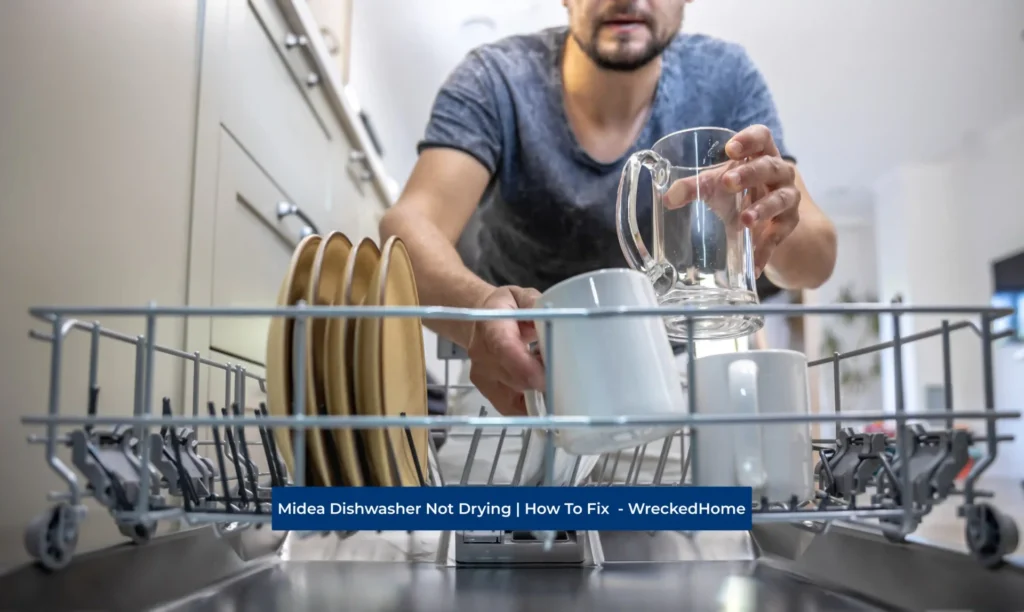
Image by pvproductions on Freepik
Loading your dishwasher improperly way can lower the drying performance. To avoid overcrowding, leave enough space between items for air to circulate, and make use of the dishwasher’s adjustable racks and tines to accommodate various dish sizes. Keep larger items like plates and pots toward the center on the other hand smaller items like cups and glasses place securely positioned in the racks.
E. Rinse Aid Can Improve Drying
Rinse aid plays a crucial role in increasing drying performance of Midea dishwasher. By following manufacturer’s instructions in dishwasher’s rinse aid dispenser it reduces water surface tension, allowing water to drain off dishes more easily.
Maintenance Tips for Midea Dishwashers
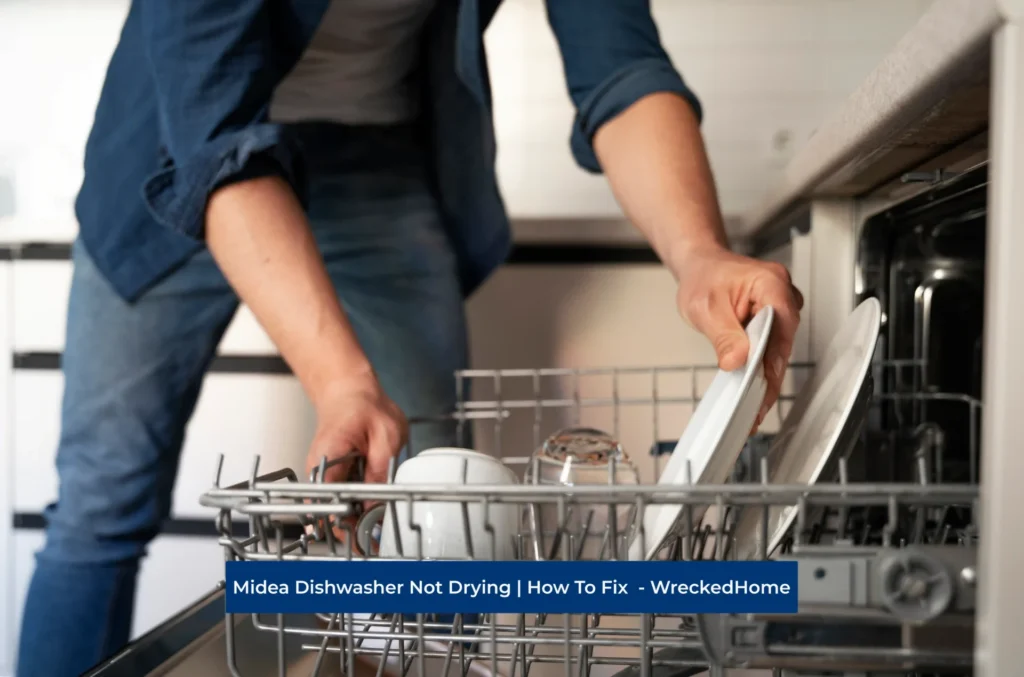
Image by Freepik
Like any other house hold appliance, Midea dishwashers also require care and maintenance for longevity and optimal performance. For this follow these tips and tricks
- Regular Cleaning of the Dishwasher: Remove food residue, grease, and mineral deposits. Regularly clean your dishwasher to removes any debris.
- Clean the Filter and Spray Arms: Cleaning the dishwasher filter and spray arms are essential components of drying. Any type of clogs or debris can lead to obstructions. Remove the filter (usually located at the bottom of the dishwasher) and rinse it ensures proper water circulation and drying performance.
- Routine Maintenance Checks: Regularly check out dishwasher’s hoses, including the inlet and drain hoses, for any signs of crack, damage, leaks, or kinks. These are critical issues that can affect drying performance.
- Appropriate Dishwasher Detergent: Use a high-quality dishwasher detergent that combats hard water and keeps your dishwasher safe. Also avoid using too much detergent. This can lead to residue buildup on dishes.
When to Seek Professional Help
If you try to troubleshoot the issue but still cannot fix the issue then you may need to call in a professional.
There are some of the common signs that indicate you need a professional:
- When the issue is persistent with drying, even after following troubleshooting steps.
- You can notice unusual voice noises during the dishwasher’s operation.
- There are leaks or visible water damage around the dishwasher that you cannot control.
- Error codes on the display panel that you are unable to understand and resolve.
- If there is any issue in electric wire or switch of your dishwasher
Conclusion
We encourage readers to try the DIY fixes, as outlined in this article. The Midea dishwasher not drying can be attributed to various factors, including a faulty heating element, loading issues, drainage problems, and incorrect detergent usage.
Addressing these issues through systematic troubleshooting is crucial in preventing drying problems and ensuring the longevity of your dishwasher. Although you can troubleshoot issues easily there are persistent or complex issues. In this scenario, seeking professional help from experienced appliance technicians is the safest and most effective course of action.
For any repairs, installations, builds, or questions; We recommend you to hire a professional. Find A Pro Near You Here!
Thumbnail by: PhotoMIX Company: https://www.pexels.com/photo/close-up-photo-of-dishwasher-213162/

